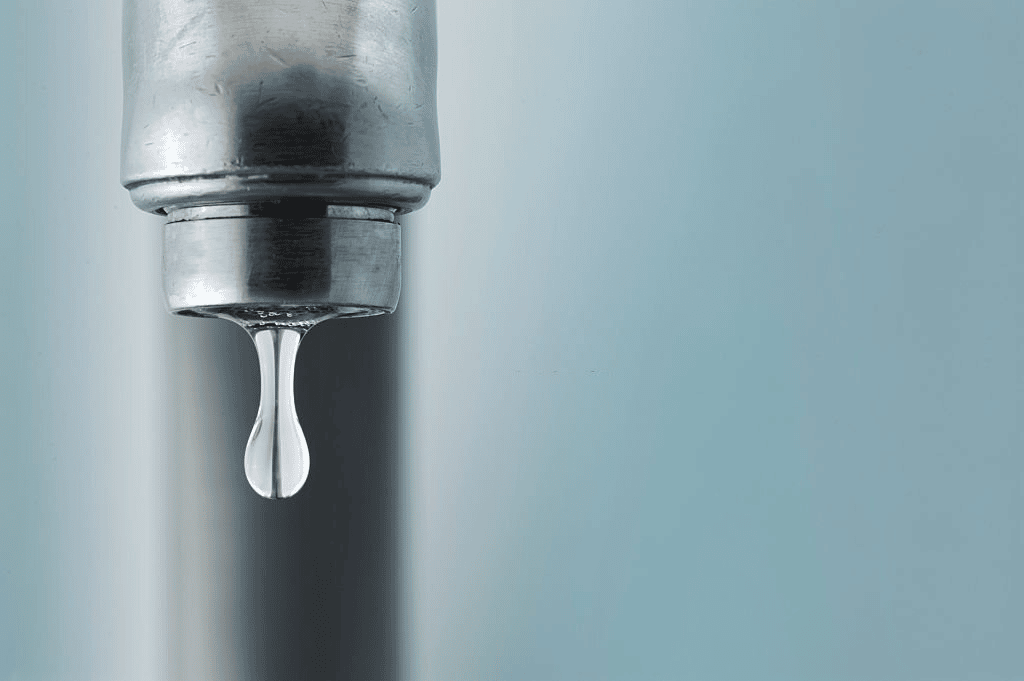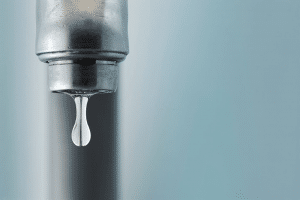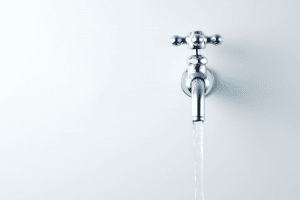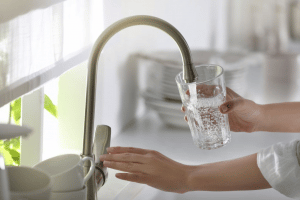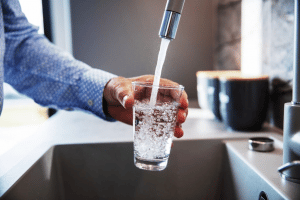Image Source: iStockPhoto
As a homeowner, you must understand the differences between spigots, taps, and faucets. While these terms are often used interchangeably, they have distinct differences and functions. Knowing these differences is essential if you want to purchase any plumbing fixture or make any repairs.
Spigot
Image Source: iStockPhoto
What’s a Water Spigot
A water spigot is an outlet for water used in residential or commercial settings. It is typically connected to a plumbing system and allows for water flow control. To use a water spigot, a handle is used to turn the water on and off, while a knob or lever controls the temperature. Water spigots are typically made of brass, stainless steel, chrome, or plastic and are designed to be durable.
Frost-Proof Spigots
A frost-proof spigot is an outdoor plumbing fixture that keeps water flowing outdoors during cold weather. It allows water to drain from the pipe and away from the spout when temperatures drop below freezing. This prevents the water from freezing inside the pipe and causing damage to the fixture and plumbing system. They are typically made of plastic or metal and are available in various sizes and finishes to match the style of your home.
Why Is It Called a Spigot
The term “spigot” is derived from the Middle English word “spigot,” which means “wooden stopper.” It refers to a device used to control the flow of a liquid. The word describes a variety of devices, such as a faucet, a tap, or a spout.
In some regions, the word “spigot” is also used to refer to a plug or stopper. This term has been used since the 15th century as a noun or a verb. In engineering, the term describes a pipe or valve connected to a container that regulates liquid flow. Today, the spigot is a term commonly applied to European countries, such as the United Kingdom.
What Is the Difference Between Spigot and Spicket
Spigot and spicket are often used interchangeably to refer to the same thing. These are valves or taps that control the flow of a liquid or gas. In the United States, spicket is a term prevalent in Mississippi. Meanwhile, spigot is a term commonly used in the Central and Middle Atlantic states. The remaining states use the term “taps” or “faucets” instead of “spigots” or “spickets.”
How Spigot Works
A spigot is a device that controls the flow of water from a plumbing system. It is usually composed of a valve, handle, and spout.
To operate it, the handle is turned to the desired position, which opens or closes the valve. When the valve is opened, water can flow from the spout. Water pressure and the position of the handle control the amount of water released.
Depending on the type of plumbing system, the fixture may require a separate shut-off valve to control the water flow. In addition, modern spigots often feature technology that helps conserve water, such as an aerator.
Tap
Image Source: iStockPhoto
Tap Meaning
The meaning of a tap could be similar to spigots or faucets. It is a device that controls the flow of liquids and gasses. It comprises a handle, stem, seat, and washer. When the handle is turned, the stem lifts the seat, and the washer seals off the opening, allowing the liquid or gas to flow.
Taps are used in various applications, including plumbing, water treatment, and manufacturing. They can be used for commercial and residential purposes and are commonly used in the food and beverage industry. Moreover, taps are also used to regulate pressure.
Why Is a Tap Called a Faucet?
A tap is also called a faucet, depending on your country or continent. In the United States, the term for these water fixtures that control or regulate water flow is a faucet. Meanwhile, the same device is called a tap in the United Kingdom.
New Zealand, Australia, and South Africa refer to faucets as tap. Even India uses this term more than faucets, even if they have a lot of American English speakers. Hence, it could be assumed that North America is among the few countries that use the term faucets. In Southeast Asia, it is the Philippines that call these fixtures faucets.
Parts of a Tap
The parts of a tap include the following:
- a spout for the water to come out of;
- a handle to control the water flow;
- an inlet for the water to enter from, a valve stem to control the water flow; a cartridge to ensure the water is released at the correct pressure and temperature;
- and a bonnet nut to attach the tap to the sink.
Taps are an essential part of any kitchen or bathroom, providing an easy way to control the water flow. When it comes to maintaining a tap, it is essential to clean and replace the parts regularly to ensure efficient operation.
Is Tap Water and Faucet Water the Same?
Tap water and faucet water are essentially the same since both refer to the same source of water provided through a plumbing system. Tap water and faucet water are regulated by the EPA and must adhere to standards for drinking water and safety regulations. These are just nuances in the term, and they don’t vary in meaning.
Depending on where you live, tap water might not feel synonymous with faucet water. But in technicality, they just pertain to the water that is released via a water fixture.
Faucet
Image Source: iStockPhoto
Parts of a Faucet
There are numerous parts that could consist of a typical faucet. Here are they:
- Aerator – It reduces water flow volume without decreasing the high-pressure flow.
- Spout – This is where the water gets released from its source to the faucet body.
- Handle – It is the one that you use to open or close the valve.
- Valve – Valves are the ones that control the water flow.
- Faucet body – The body is where the water passes through.
- Mount – It is a platform where you attach the faucet.
Different Types of Faucets
Faucets are an essential part of any home, and several different types are available on the market.
- Compression faucets use rubber washers to create a water-tight seal.
- Ball-type faucets contain a ball-shaped handle and are usually a single-handle type.
- Cartridge faucets use a cartridge to control water flow; they are usually two-handled.
- Disc faucets are a newer type that is durable and water-efficient; they use ceramic discs and seals to control water flow.
- Touchless faucets use motion sensors to control the water flow.
Health Faucet vs Jet Spray
Health faucets are widespread in hygiene-critical environments, such as hospitals and food processing plants, for their superior efficacy in controlling bacteria. Meanwhile, jet sprays, on the other hand, have become a popular choice in the home and office due to their lower cost, ease of installation, and improved water efficiency. They are suitable for office washrooms and home bathrooms.
Hose Bib vs Faucet
Hose bibs are most commonly used outdoors, providing an easy and convenient way to access water for gardening and other outdoor activities. Hose bibs are generally more durable and water-resistant than indoor faucets and often come with a frost-proof design.
On the other hand, faucets are most commonly used indoors and provide a controlled water flow. Faucets are typically more aesthetically pleasing than hose bibs and come in various styles and finishes.
Pre-Rinse Faucet vs Pull Down
Generally speaking, pre-rinse faucets are used in commercial settings because they can provide a robust, high-pressure spray with an extensive reach. This is ideal for washing dishes quickly and efficiently.
On the other hand, pull-down faucets are more commonly used in residential settings. They typically have a spray head that can be pulled out and moved around to reach different areas. This makes them perfect for daily tasks such as filling pots and cleaning off countertops.
Grohe vs Hansgrohe Faucets
Grohe and Hansgrohe are two of the most popular faucet brands today. Grohe is known for its modern designs and innovative shower sets, such as the Euphoria and DreamSpray sets.
Hansgrohe offers a wide range of classic designs that focus on durability, featuring a special anti-lime system and QuickClean technology for easy maintenance.
Both brands have a wide selection of colors, finishes, and styles, making them suitable for any bathroom or kitchen décor.
Waterfall Faucet vs Regular Faucet
Waterfall faucets and regular faucets offer different benefits for bathroom sinks. Waterfall faucets provide a modern and stylish look that brings a luxurious feel to bathrooms. The water cascading over the edge of the faucet creates a unique and attractive effect.
However, regular faucets can be more efficient than waterfall faucets because they use less water. The design of standard faucets also makes them easier to use, as they can be operated with one hand.
Overall, waterfall faucets are an excellent choice for creating a luxurious bathroom design, while regular faucets offer a more practical solution.
Faucet vs Spigot vs Tap
Image Source: iStockPhoto
Faucet vs Spigot: What’s the Difference
What’s the difference between a faucet and a spigot? Faucets and spigots refer to the same devices. However, there are variations to these fixtures, depending on where you live. For instance, some regions use faucets to refer to household water fixtures that can mix cold and hot water. Meanwhile, a spigot is an outdoor fixture with a single spout used to control water flow from a hose or pipe.
Tap vs Faucet: What’s the Difference Between Tap and Faucet
Tap and Faucet Difference
The terms tap and faucet are often used interchangeably, but they have distinct differences. A tap is a device that controls the flow of liquids from a pipe or container. A faucet, on the other hand, is a tap typically found in the kitchen and bathroom. Faucets are often more decorative than taps and are designed to be mounted on the wall or sink.
Tap Valve Types
Tap valves are an essential element of many plumbing systems. There are various tap valves, each suited to a specific purpose.
- Compression valves, for example, are most commonly used in sink and tub faucets and are designed to have a washer and screw mechanism to control water flow.
- Cartridge valves are designed to provide a more accurate flow rate and temperature control than other faucet types.
- Ball valves are also often used in plumbing systems, as they can be operated with a quarter turn and can be used to control the flow of hot and cold water in a shower or bath.
- Ceramic disc valves are becoming increasingly popular due to their superior performance, as they are designed to be more water-efficient and offer better flow control. They are also highly resistant to wear and tear and can easily last for decades.
Difference Between Male and Female Tap Aerator
Male and female tap aerators are essential for keeping water and energy bills low, but there are some key differences between the two.
The male aerator has a thread that screws directly onto the tap and has a smaller diameter than the female aerator. The female aerator has a thread that fits into the fixture and features a larger diameter. This difference in size affects the amount of water and pressure the aerator can produce.
Difference Between Kitchen Faucet and Bathroom Faucet
The difference between kitchen and bathroom faucets lies in the purpose of each. Kitchen faucets are designed to provide maximum water flow for washing dishes and cleaning up messes. They often come with a sprayer or a side handle for maximum utility.
On the other hand, bathroom faucets are designed to provide a steady stream of water for hand washing and showering. Most bathroom faucets have a single handle for temperature control and flow control.
Difference Between Chrome and Stainless Steel Faucets
Chrome-plated faucets are the least expensive and provide a glossy, reflective finish. They are highly resistant to corrosion and scratches but can become discolored over time due to exposure to moisture and other elements. Stainless steel faucets are more expensive but more durable and resistant to corrosion and scratches. They offer a more modern, industrial look and are available in various finishes.
Is Chrome or Stainless Steel Better for Kitchen Faucet
When deciding which kitchen faucet to purchase, it is essential to consider the long-term benefits of chrome and stainless steel. Chrome is generally more affordable and offers any kitchen a sleek and modern look. However, stainless steel is a much more durable option and is also resistant to corrosion and staining. This makes it an ideal choice for those looking for a long-term investment.
Difference Between Pull Down and Pull Out Kitchen Faucets
The main difference between the two is the design of the spray head. Pull-down faucets have a spray head attached to the end of a flexible hose and can be pulled down from the faucet body to be used. Pull-out faucets have a spray head attached to a retractable hose, which can be pulled away from the faucet body and operated at any distance. Both offer superior convenience in the kitchen and can be used for various tasks.
